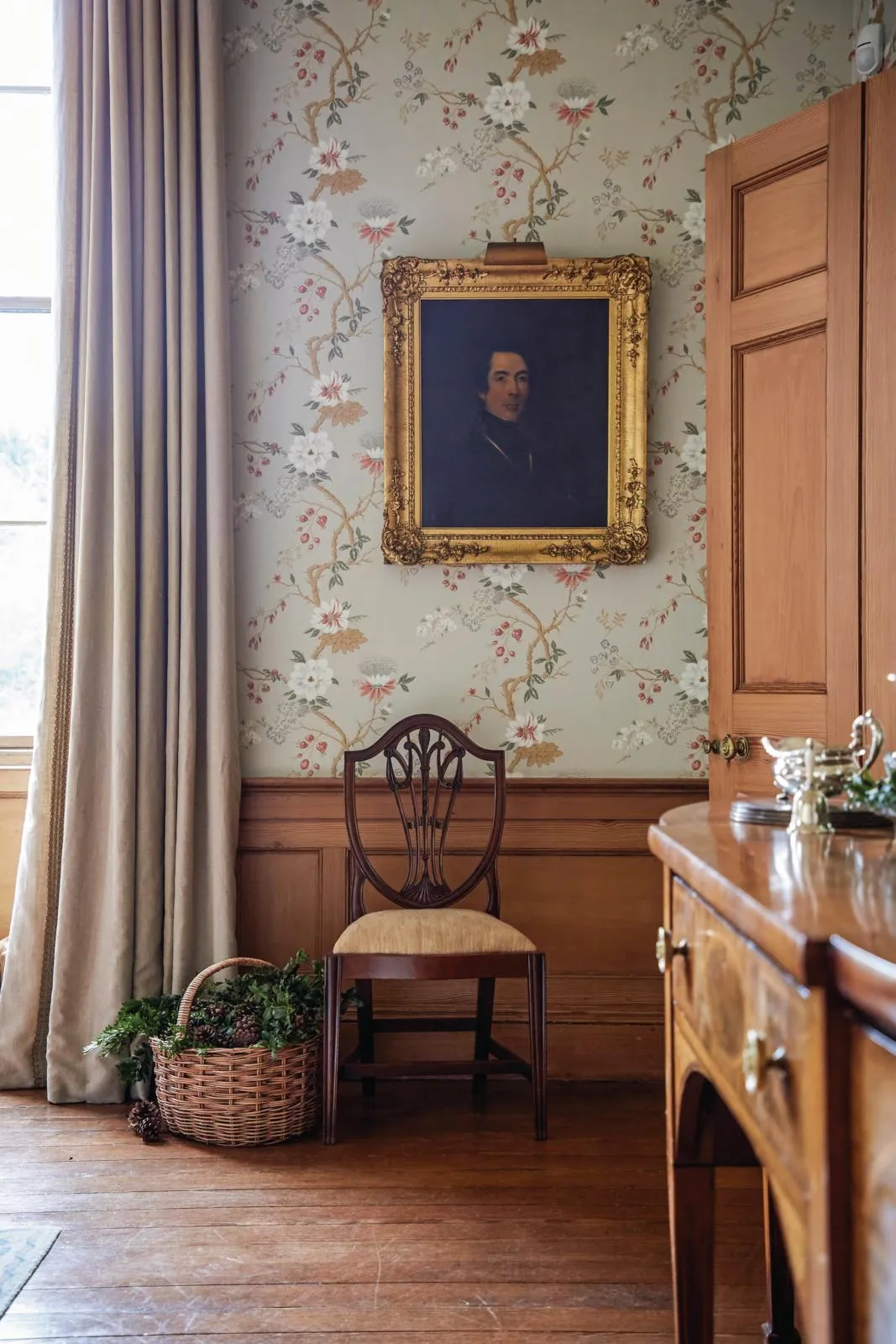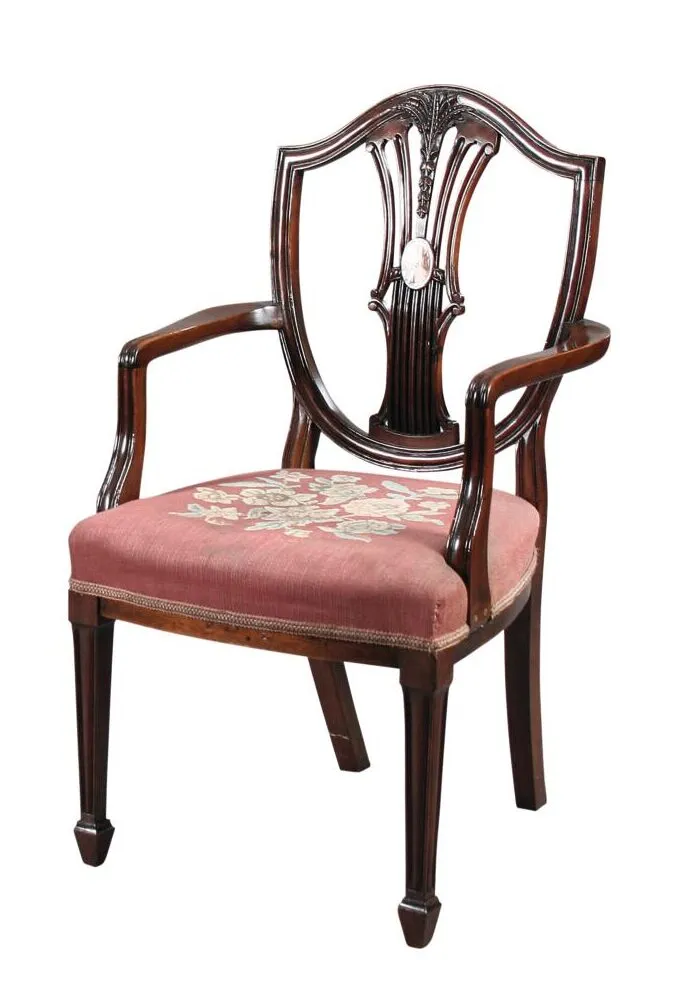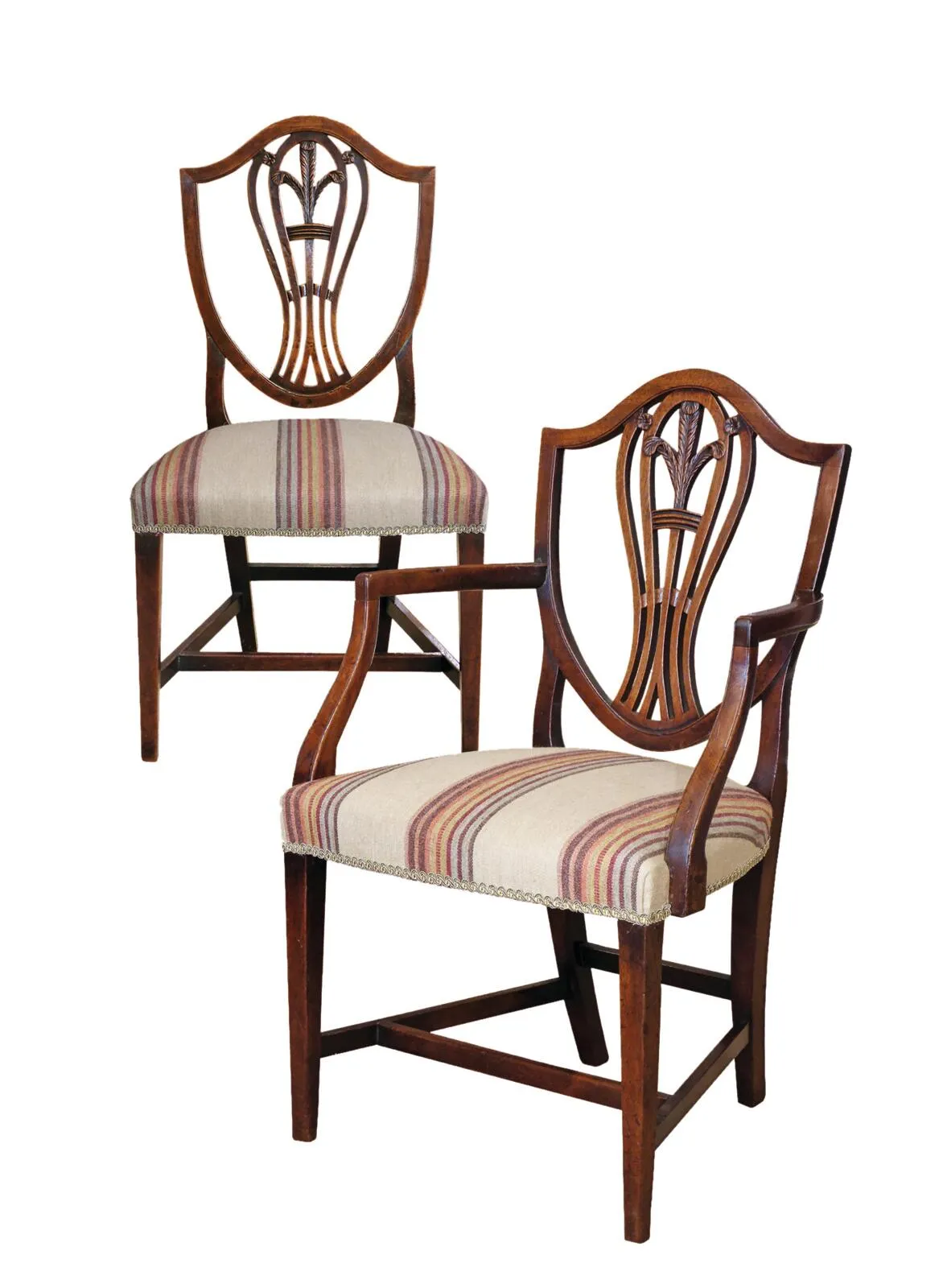Wind back the clock two centuries or so, to a time when the dining room lay at the heart of every comfortable home. Conversation was as important as the food that was served – part of civilised life – and when the ladies had withdrawn, gentlemen spent long hours comfortably ensconced around the table. Chairs were essential to this way of living, and in the 1770s a new style of seat became fashionable: one that has remained so with few interruptions ever since.

‘Shield backs are one of the most iconic chair designs,’ says Neil Grenyer, furniture expert at Lawrences Auctioneers. ‘Today they are invariably associated with the name of George Hepplewhite.’ His book of furniture designs Cabinet-Maker and Upholsterer’s Guide (1788) popularised them, but many other makers produced them.
You might also like a history of the Sussex chair
The distinctive shape emerged from Robert Adam’s neoclassical designs and the new, integrated approach to interiors that took hold during the late 18th century – quickly spreading from grand country houses to capture the attention of the wider public. As a cabinet-maker, Hepplewhite favoured this neoclassical style in furniture, aiming to ‘unite elegance and utility,’ and he provided other makers with a variety of designs to suit different markets. From the 1790s, Thomas Sheraton continued the trend, including shield backs in his published designs, and the chair has never lost its hold on the elegant interior.

During the Adam Revival of the late 19th century, leading furniture makers such as Wright & Mansfield and Waring & Gillow were among those producing high-quality shield backs. Versions also reappeared in the early 20th century. Sometimes elaborately decorated with finely carved motifs, shield backs were usually made from mahogany. ‘But satinwood, painted with flowers was a popular alternative,’ says Neil. ‘And they were also made from stained beech, walnut and rosewood.’ He suspects that part of their lasting appeal lies in their sturdiness as well as their elegance; many have survived, often in good condition.
You might also like a history of Peacock chairs
‘Dating is largely a matter of experience,’ he explains. ‘There are some extremely good early 20th-century versions and they are almost impossible to detect unless you handle them. Look for marks of genuine wear and age, and for the signs of hand craftsmanship: 18th-century chairs were handmade, usually from solid wood, later ones were made by machine, sometimes using veneers. Hand-carved chairs will have slight differences even when part of a set.’

Value isn’t necessarily just a question of age. Quality and condition are also crucial. Sets of eight, 10 or 12 are always desirable, especially if there are two carvers – although, be warned, sometimes two side chairs have had arms added at a later date. ‘You will be able to detect this by the width of the seat: carvers should be wider than side chairs, if they are the same width, beware. Unless the chairs are of outstanding quality their visual appeal is key. This is particularly true of painted versions,’ says Neil.
‘A presentable set of 18th-century chairs could be £2,000-plus at auction, but people are often happy to buy a good-quality Edwardian set, which will be noticeably less costly. They will probably also be more robustly built and better suited to the average-sized, 21st-century human body!’
